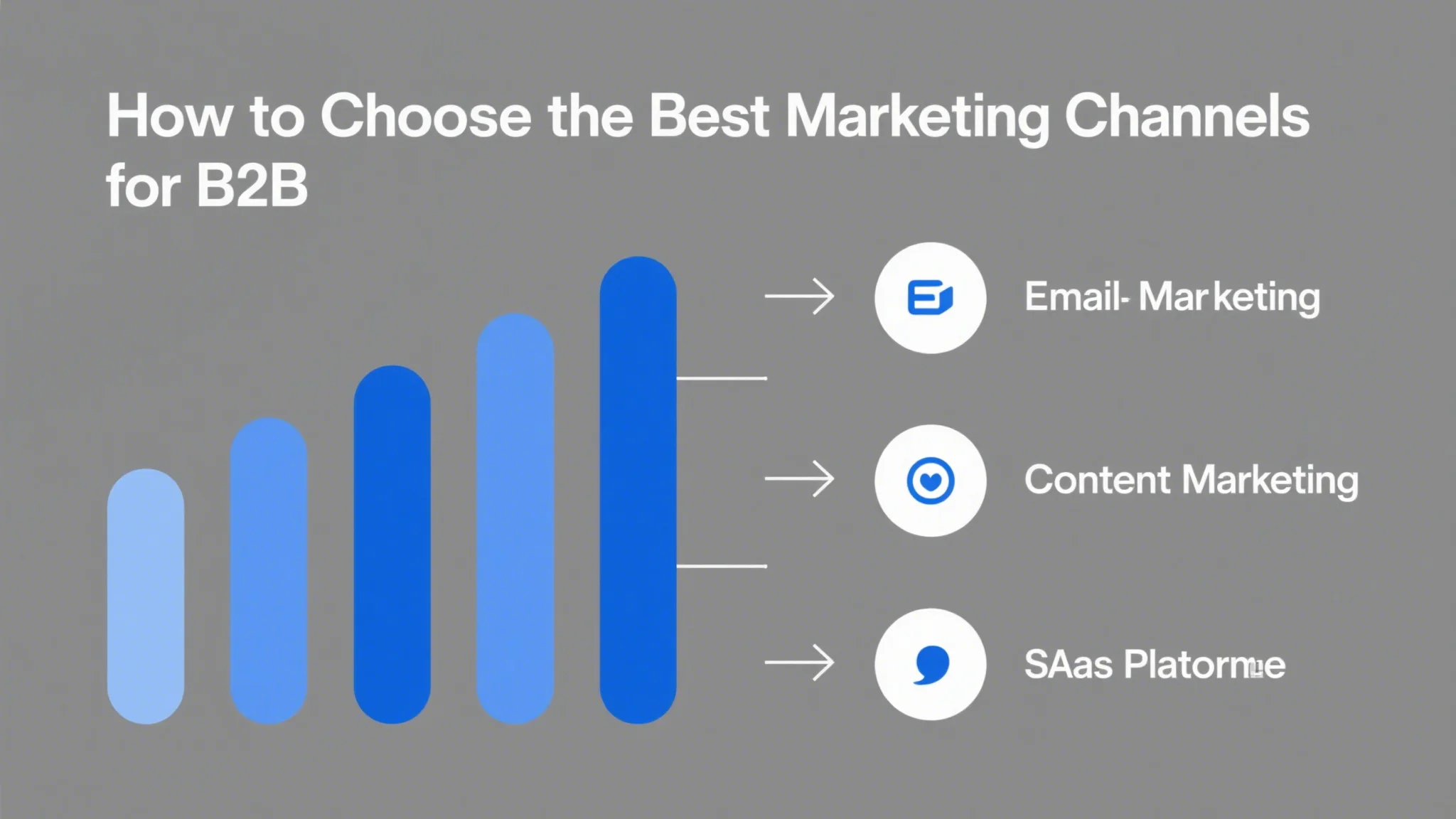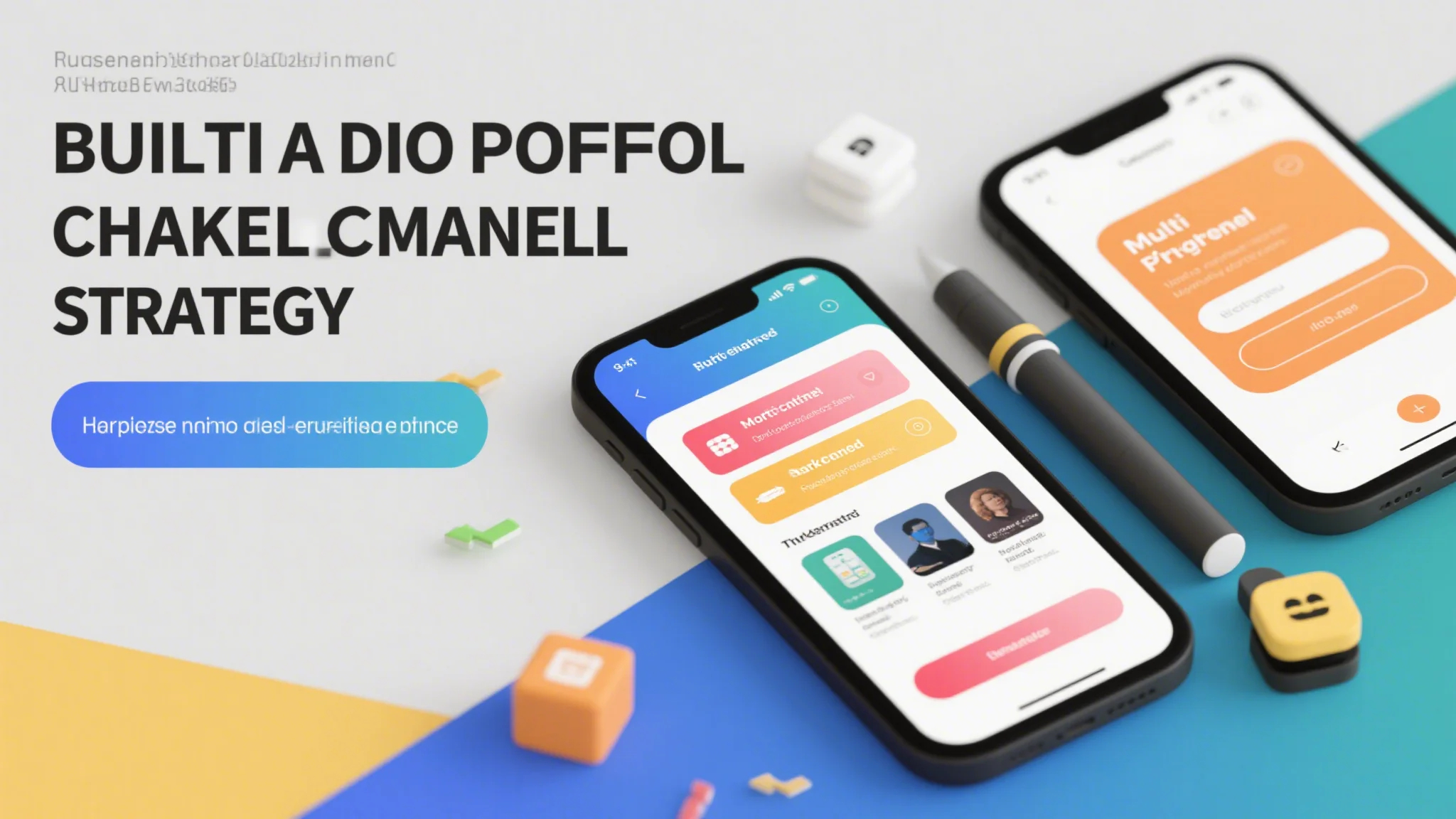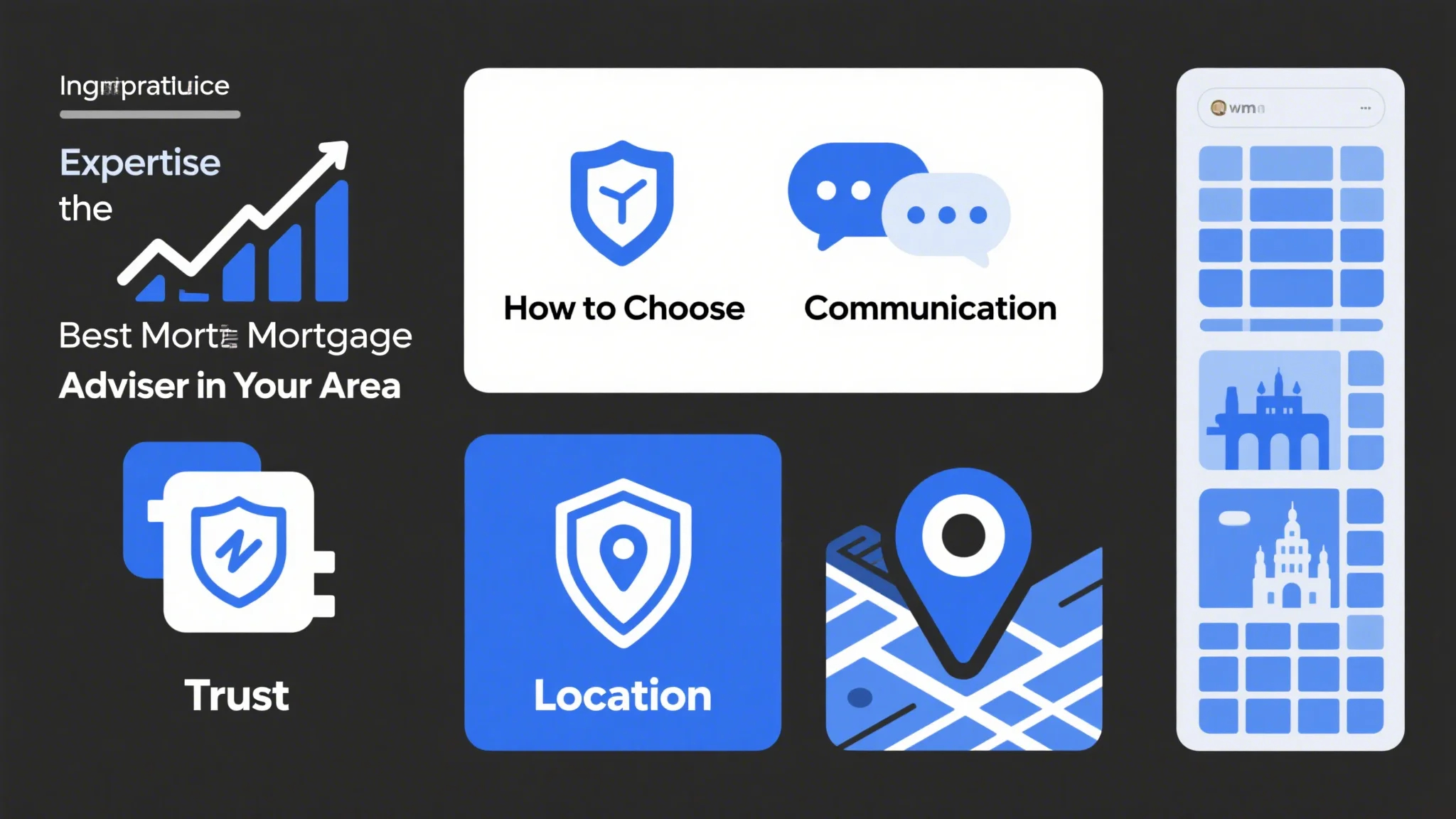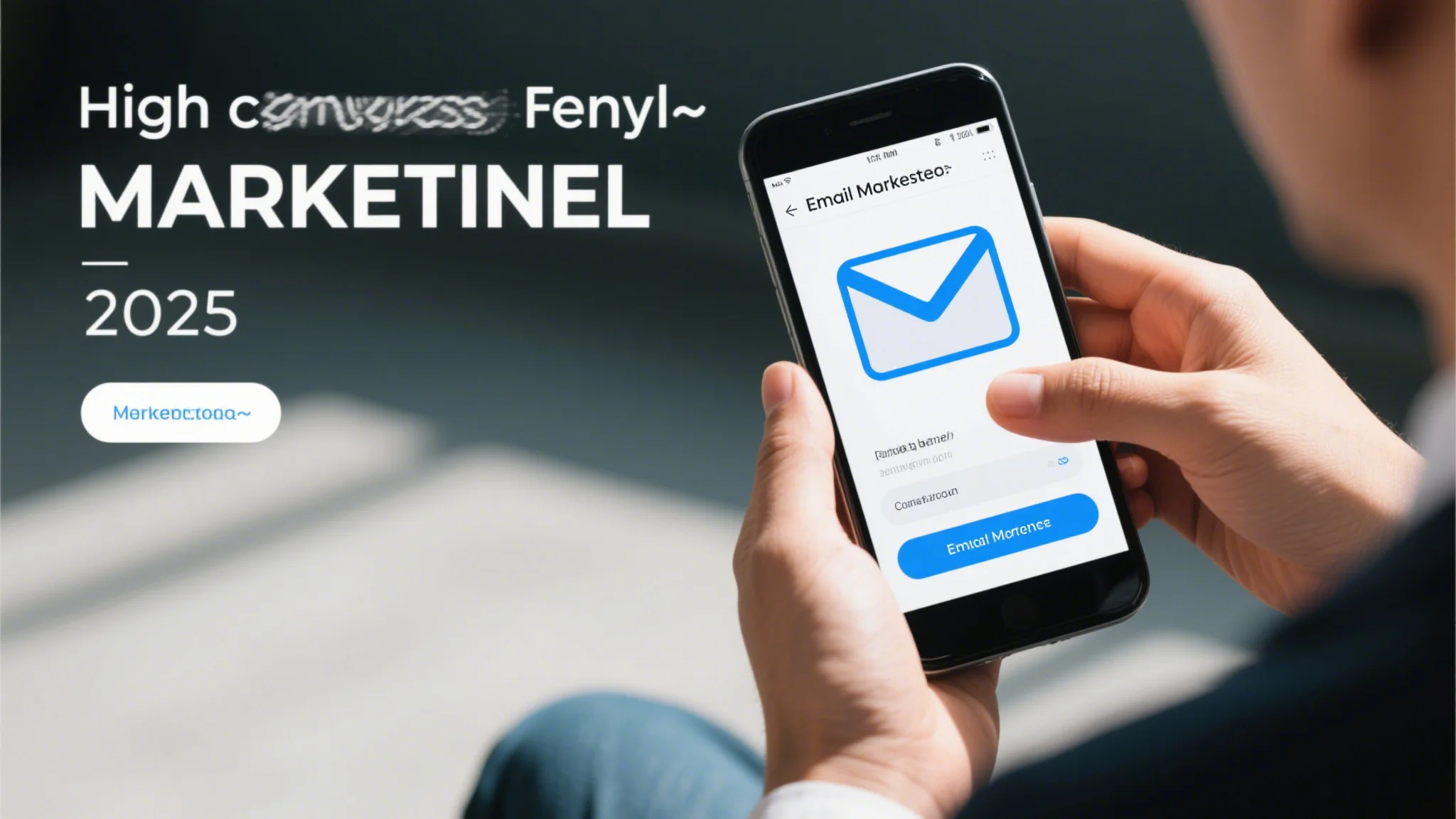
In the realm of B2B marketing, the choice of marketing channels can make or break your success. With so many options available—ranging from digital marketing to content marketing, social media, and webinars—it’s essential to carefully evaluate which channels align best with your business objectives, target audience, and budget.

Understanding Your Target Audience
The first step in selecting the right marketing channels is to deeply understand your target audience. B2B marketing is all about connecting with other businesses, decision-makers, and professionals. Unlike B2C marketing, where the focus is on individual consumers, B2B marketing requires a more nuanced approach.
To identify the right channels, start by defining your ideal customer profile (ICP). Consider factors such as company size, industry, location, and job roles. For example, if your target audience consists of senior executives in large enterprises, channels like LinkedIn and industry-specific forums may be more effective. On the other hand, if you’re targeting small to medium-sized businesses (SMBs), social media platforms like Facebook or Instagram might be more appropriate.
Setting Clear Marketing Goals
Before diving into marketing channels, it’s crucial to set clear and measurable goals. Are you aiming to increase brand awareness, generate leads, or drive conversions? Your goals will directly influence the channels you choose.
For instance, if your primary goal is lead generation, you might focus on channels like email marketing, webinars, or account-based marketing (ABM). These channels are highly effective for engaging with specific prospects and nurturing relationships. On the other hand, if your goal is to increase brand awareness, content marketing and social media marketing might be more suitable.
Evaluating Marketing Channels
Once you’ve defined your audience and goals, the next step is to evaluate the available marketing channels. Here are some of the most popular B2B marketing channels and their pros and cons:
Digital Marketing (SEO, PPC, and Webinars):
Pros: Highly targeted, measurable, and scalable.
Cons: Can be resource-intensive, especially for PPC campaigns.
Content Marketing (Blogs, Ebooks, Whitepapers):
Pros: Builds credibility and attracts qualified leads.
Cons: Requires consistent effort and time to see results.
Social Media Marketing (LinkedIn, Twitter, Facebook):
Pros: Cost-effective, allows for direct engagement, and can help build relationships.
Cons: Requires consistent posting and active management.
Email Marketing:
Pros: High ROI, personalization, and direct access to leads.
Cons: Can be seen as spam if not done effectively.
Account-Based Marketing (ABM):
Pros: Highly personalized and effective for targeting specific accounts.
Cons: Requires significant resources and coordination.
Networking and Events (Trade Shows, Conferences, Webinars):
Pros: Opportunities for face-to-face interactions and relationship-building.
Cons: Can be time-consuming and expensive.
Creating a Content Strategy
Once you’ve selected your channels, the next step is to create a content strategy that aligns with your audience’s needs and preferences. Content is the backbone of any successful marketing effort, and it plays a critical role in engaging and converting leads.
For B2B marketing, content should be informative, educational, and tailored to the specific pain points of your audience. Consider creating whitepapers, case studies, eBooks, or blog posts that provide value to your readers. Additionally, leveraging video content, such as product demos or thought leadership interviews, can be highly effective in capturing attention and building trust.
Allocating Your Budget
Budget allocation is another critical factor in selecting the right marketing channels. It’s important to strike a balance between experimenting with new channels and investing in proven strategies. Start by allocating a portion of your budget to high-impact channels like digital marketing and content marketing, which offer measurable ROI.
If you’re new to B2B marketing, consider starting with low-cost channels like social media and email marketing. These channels allow you to test the waters and gather data before committing to more expensive options like PPC or ABM.
Measuring ROI and Adjusting Your Strategy
One of the key advantages of B2B marketing is the ability to measure ROI with relative accuracy. By tracking key performance indicators (KPIs) such as lead generation, conversion rates, and customer acquisition cost (CAC), you can assess the effectiveness of your chosen channels.
If certain channels are underperforming, don’t be afraid to pivot your strategy. For example, if your social media campaigns aren’t generating the desired results, consider reallocating your budget to digital marketing or webinars. Continuously monitoring and adjusting your approach will help you stay on track to meet your business goals.
Staying Ahead of Industry Trends
The world of marketing is constantly evolving, and staying ahead of industry trends is essential for long-term success. Keep an eye on emerging channels and technologies that could benefit your B2B business. For instance, the rise of AI-powered marketing tools and data-driven decision-making is transforming the way businesses approach their marketing efforts.
Additionally, consider the growing importance of customer experience (CX) in B2B marketing. Today’s buyers are more informed and demanding than ever before, and they expect personalized and seamless interactions across all touchpoints. By prioritizing CX, you can differentiate your brand from competitors and build lasting customer relationships.
Leveraging Partnerships and Referrals
Another effective way to expand your reach in B2B marketing is by leveraging partnerships and referrals. Collaborating with industry influencers, thought leaders, or complementary businesses can help you tap into new audiences and establish credibility.
For example, partnering with a trusted industry expert to host a webinar or co-author a whitepaper can be a powerful way to reach a targeted audience. Similarly, encouraging satisfied customers to refer new business can help you build a steady stream of qualified leads.
Avoiding Common Mistakes
While selecting the right marketing channels is crucial, it’s equally important to avoid common pitfalls. One of the biggest mistakes in B2B marketing is spreading your resources too thin by trying to be everywhere at once. Instead, focus on a few high-impact channels and execute them with precision.
Another mistake is neglecting to tailor your message to the specific needs of your audience. Generic messaging is unlikely to resonate with busy professionals who are looking for solutions to their unique challenges. Always prioritize clarity, relevance, and value in your content and communication.
Choosing the best marketing channels for your B2B business requires a strategic approach that takes into account your audience, goals, and budget. By understanding your audience, setting clear goals, evaluating channel options, and creating a compelling content strategy, you can maximize your marketing efforts and achieve







